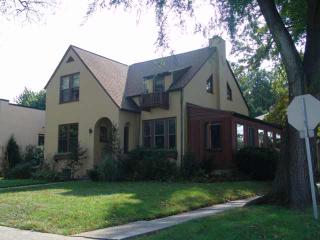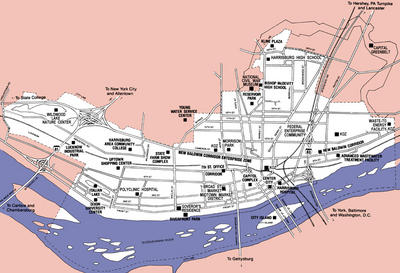Article Review
W. Greg Rothman
Housing Bubble or Rational Price Appreciation?James W. Hughes, PhD, and Joseph J. Seneca, PhD, The Appraisal Journal
This article discusses the cycles of residential real estate and focuses on three booms and bubble busts. The key question is whether or not the current real estate market has reached a bubble in the northeast. The authors compare the residential real estate market with the 1990’s high-technology boom and subsequent bust. It is rightly noted that the housing market carried the United States out of a recession in the early 2001 and lifted us out of the ruins of the September 11th terrorist attacks.
The strength of the residential real estate market in the last half decade has been driven by 45-year low mortgage interest rates. The authors specifically look at the tri-state area of New York, Connecticut, and New Jersey. All three of these states have experienced extraordinary increases in housing prices. In addition to near half-century low interest rates, the authors also cite the diminishing availability of building lots in the tri-state area and its impact on housing costs.
Their conclusion is that the swell in housing prices in the New York region “does not represent an excessive, unsustainable advance, at least when assessed at the statewide level.” They also conclude that “the combined impacts of rising interest rates, advancing incomes, and a stronger economy are likely to lead to a soft landing – a slowdown in house price appreciation – rather than a painful housing price correction or crash.”
The article examines three other real estate market bubbles in the last quarter century. The first is the commercial office space boom in the early 1980’s following the accelerated cost-recovery established with the passing of The Economic Recovery Tax Act of 1981. The legislation gave commercial office building owners the ability to depreciate their office buildings over only fifteen years, rather than the current 39 years. This change created a tax benefit for commercial building owners that made owning this type of real estate extremely attractive.
The article also cites the legislation that deregulated the Savings and Loan industry and permitted S & L’s to make non-residential loans. These changes in the tax code and deregulation led to the boom in commercial real estate for the first half of the 1980’s.
The authors fast-forward to 1990 when the bubble burst and blame it on the “development excesses [that] were glaringly revealed.” To be sure, there were development excesses and loose loans made by the numerous Savings and Loans throughout the country. However, the authors fail to address the 1986 Tax Reform Act that took away the accelerated depreciation, effectively pulling the rug out from under commercial real estate developers and building owners in the United States. The government inspired boom was bust by the 1986 legislation.
The second boom-bust example that is analyzed by the authors was the high-technology investment boom of the late 1990’s. The so-called “dot com” exuberance in the stock market was driven by high-flying stock values without any relation to profits or assets.
Herein lies the major problem with comparing the real estate market with the hi-tech stock market sector. Real estate is valued by three different, distinct and equally important approaches. The Cost Reproduction Approach values the building based on the cost to construct the property less any applicable depreciation. The Income Approach values the real estate based on actual or expected income less expenses. The Sales Comparison Approach values the real estate by comparing it to other recent confirmed sales of similar properties.
The “dot com” stocks that rocketed to sky-high prices in the late 1990’s had no such valuation approaches. The values of the company’s assets did not reach anywhere close to the total stock share value. Applying the traditional real estate Income Capitalization Approach to the 1990’s hi-tech stocks would yield a value nowhere near the stock price, as often the companies had no profits to show.
The third boom was the related stock market boom in the mid and late 1990’s. The authors cite the NASDAQ Composite Index and its growth from 1996 to 1999. By October 2001, NASDAQ had given back all of its gains and declined three straight years 2000, 2001, and 2002. The NASDAQ began recovering by 2003. The authors fail to note three other events that impacted the U.S. during late 2000 and 2003. The first event was the prolonged presidential election of 2000. Financial markets are never comfortable with uncertainty and it took several weeks after Election Day before the Supreme Court ratified the election of George Bush. The second event was the aforementioned terrorist attacks designed to cripple our financial market and destroy our economic morale. While “9-11” has become the hackneyed excuse for economic failures, a study of the capital markets in the early 2000’s is not complete without addressing the impact of the attacks on our economy. The third event that has impacted our economy was the war in Afghanistan and Iraq. Many would seek to separate these two wars, but their impact on the economy is as a single seamless war. The authors fail to mention either war.
The article provides an analytical perspective of changes in housing prices between 1983 and 2003 in the tri-states and the entire United States. The authors use the Office of Federal Housing Enterprise Oversight (OFHEO) House Price Index (HPI) to “measure the change in house prices of the same single-family properties over time expressed as a housing price index.” The tables illustrate the total and compounded annual rate of change in housing prices showing various periods in the New Jersey market, the United States market, the New York market and the Connecticut market.
The authors next explore the bursting housing bubbles that led to the 1989-1992 recession in the Northeast. They explore the recovery nationally and in New Jersey (1991 to 1998). They also cite the housing recovery in New York and Connecticut.
The article addresses another federal legislative change that led to a boom in the residential real estate market. Congress passed a change in tax law in 1997 that exempted the first $500,000 in capital gains from the sale of their primary residence. Prior to the change, many empty-nesters were locked into keeping their homes rather than down-sizing and paying capital gains taxes in the 20% plus range. The only way the homeowner could defer the capital gains tax was to purchase a home of the same or higher value. Many states, including Pennsylvania, quickly followed suit and passed capital gains exemptions from state tax. The second factor was the boom in the stock market that gave homebuyers more capital to invest in their home choices. The market continued to grow from 1997 to 2000, fueling the housing booms in the tri-state and beyond. The third factor was the Federal Reserve’s aggressive reduction of interest rates. Thirteen times in a two year period, the Fed reduced interest rates to generational lows.
The authors consider whether the region’s housing prices have reached the bubble point. Since they demonstrate that appreciation rates from 1998 to 2002 have not exceeded the same levels of the appreciation seen in a similar five year period from 1983 to 1988, they conclude the tri-state housing market has not reached the bubble yet.
When the bubble and bust arrive will be a result of the economy, job growth and income levels. The authors offer the optimistic opinion that “the tri-state regional housing market is not about to suffer a collapse. The bursting of the housing bubble in 1988 remains an informative subject of history, not a predictor of our housing future.”
The safest way to predict the future is to study the past. The past as demonstrated by the authors well documented article is that government legislative changes in tax law and the Federal Reserves actions will have a greater impact on real estate market than any free-market forces can ever have.















